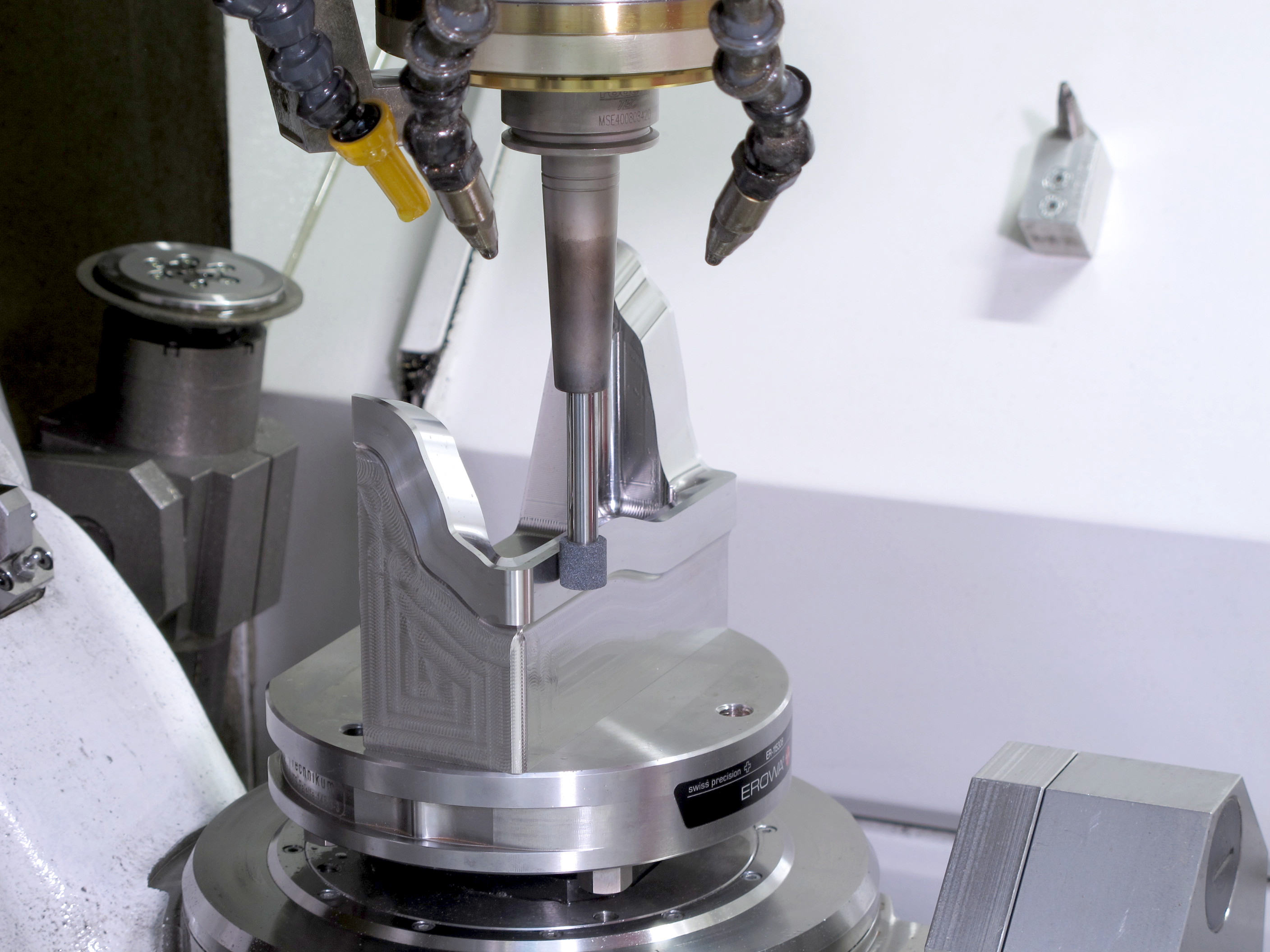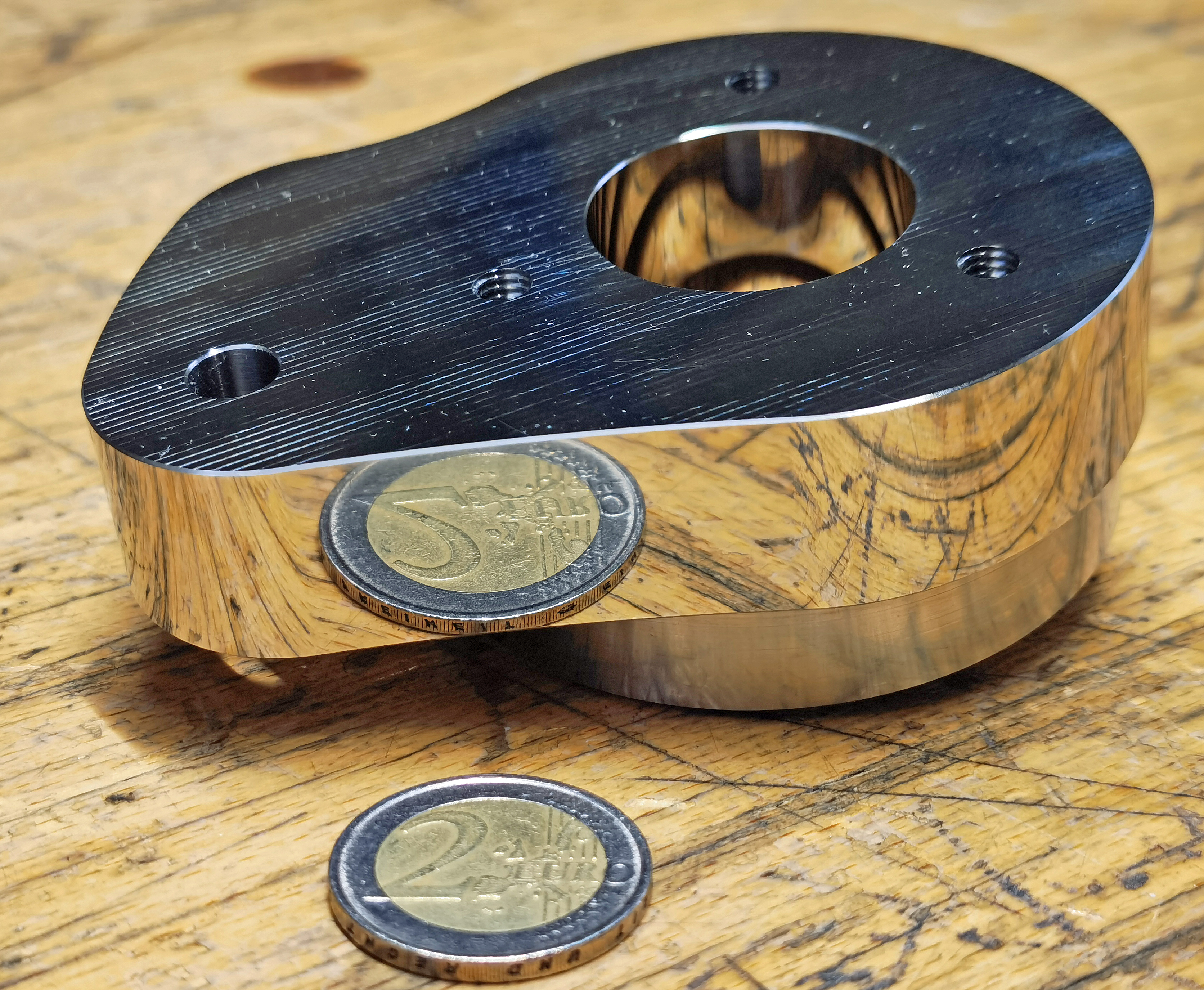New control software optimises roughing, high-speed milling and jig grinding on Röders machining centres
German machining centre manufacturer Röders has introduced to its machining centre range an upgraded CNC system capable of programming and controlling a full range of metalcutting operations more efficiently, from roughing through high-speed milling to micron-accuracy jig grinding.
Available on its 3-axis and 5-axis machines, the Racecut control enables the most demanding requirements for precision to be met, while at the same time delivering high cutting performance including when machining hard materials. Availability of the machines in the UK and Ireland is through sole sales and service agent Hurco Europe, High Wycombe.
Underpinning the high performance in terms of accuracy and speed are frictionless linear drives and 5-nanometre resolution glass scales. These are combined with the benefits of the new CNC system, which has an exceptionally high clock rate of 32 kHz. The smallest deviations in cutter paths can be detected and corrected, even during high-speed cutting, raising processing speed and optimising surface quality. Tests carried out by the manufacturer indicate that machining time can be reduced by as much as 20 percent while maintaining the same surface finish.
 Tool steel die for sheet metal processing machined on a RXP601DSH
Tool steel die for sheet metal processing machined on a RXP601DSHAdditionally, extensive compensation in the control for deviations in the angular position of the rotary table and swivelling trunnion of 5-axis machines plays a central role. Particular attention has also been paid to the control's ability to compensate precisely for spindle growth. A further notable feature is the patented, frictionless weight compensation system in the Z-axis.
For thermal stability to ensure positioning accuracy of less than one micron, the machine has sophisticated temperature management. The temperature of the medium that flows through all key elements is controlled to an accuracy of ± 0.1°C. That may be extended down to an astonishing ± 0.02°C for certain applications, such as the manufacture of plastic injection moulds for producing smartphone camera lenses.
Diamond-tipped dressers are provided for dressing the grinding wheels. The position of the tool magazine and its roller shutter prevents the ingress of even the smallest particles, ensuring that errors cannot occur due to contamination between the tool and the machine interface. A further advantage is vector control of the main spindle, which guarantees dressed grinding wheels are always clamped back into exactly the same angular position even after multiple exchanges, preventing any errors due to misalignment.
To facilitate the inclusion of jig grinding routines during shop floor programming, Röders has incorporated into its Windows-based control a database containing pre-defined parameter sets. They speed program preparation and reduce the risk of incorrect data being entered. Users can expand the database with values gained from their own experience.
 Mirror finish on the jig-ground contact surface of a cam
Mirror finish on the jig-ground contact surface of a camJürgen Röders, Managing Director of Röders GmbH commented, "One of the key advantages of our technology stems from the fact that our machines have been specifically designed for heavy-duty milling, even when processing tougher materials like tool steel at high speeds.
"Trials have shown that during jig grinding, considerably higher metal removal rates can be achieved than expected, as the machine and spindle stiffness allows grinding tools to be used to their optimum effect.
"Our customers are often surprised that the same machine is capable of roughing and at the same time is suitable for grinding to micron accuracy."
